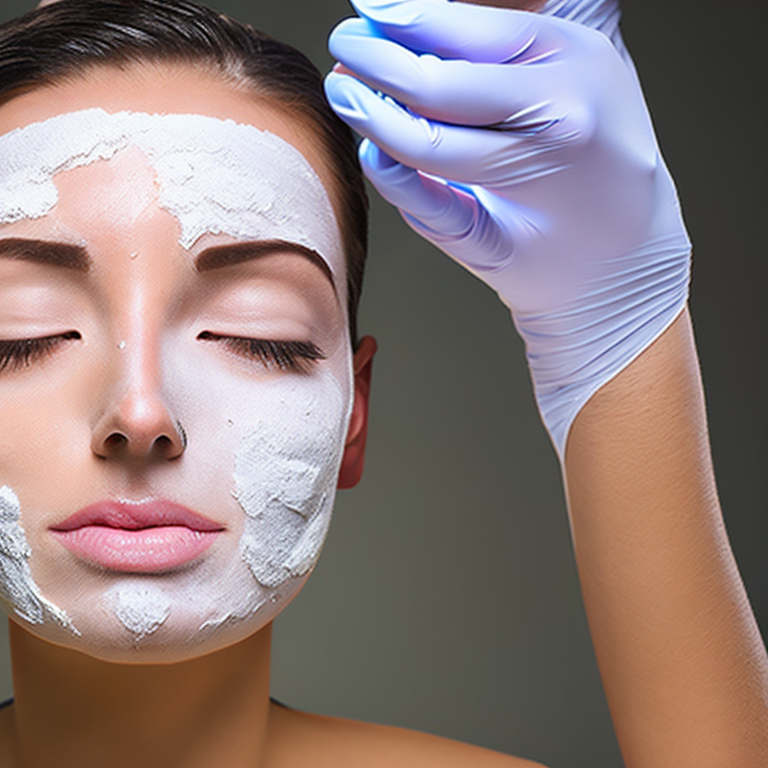Blog Details

Navigating the World of Chemical Peels: A Comprehensive Guide for Estheticians
Hey there, estheticians! Today, we're diving deep into the world of chemical peels. If you're looking to expand your skincare expertise or simply curious about this popular treatment, you've come to the right place. Chemical peels can work wonders for your client's skin, but it's essential to have a comprehensive understanding of the process before diving in. So, let's roll up our sleeves and explore the ins and outs of chemical peels!
First things first, what exactly is a chemical peel? In a nutshell, it's a cosmetic treatment that uses a chemical solution to exfoliate the skin, revealing a fresh, rejuvenated complexion. Chemical peels are categorized into three levels: superficial, medium, and deep. The level of the peel determines its intensity and the depth at which it penetrates the skin.
Superficial peels are the gentlest option, targeting the outermost layer of the skin. They are perfect for addressing minor skin concerns such as dullness, fine lines, and mild acne. On the other hand, medium peels go a bit deeper, reaching the middle layer of the skin, and are more effective in treating moderate acne, pigmentation issues, and uneven skin texture. Deep peels, as the name suggests, penetrate the deepest layers of the skin and are generally used for severe acne scarring and deep wrinkles.
Now that we have a basic understanding of the different types of chemical peels let's move on to the benefits. One of the main advantages of chemical peels is their ability to stimulate collagen production. Collagen, the protein responsible for maintaining skin's firmness and elasticity, declines as we age. By encouraging collagen synthesis, chemical peels can help reduce the appearance of wrinkles and fine lines, giving your clients a more youthful complexion.
Chemical peels also work wonders for treating hyperpigmentation, sun damage, and acne scars. The exfoliation process removes dead skin cells, revealing fresher, healthier skin underneath. With regular peels, your clients will notice a more even skin tone and a reduction in the appearance of dark spots.
Of course, like any skincare procedure, chemical peels do come with some precautions. It's important to conduct a thorough skin analysis before performing a peel to determine the client's skin type and condition. This will help you select the appropriate peel and avoid any potential adverse effects.
Post-treatment care is another crucial aspect to consider. After a chemical peel, the skin becomes more sensitive, so it's essential to advise your clients on proper skincare routine and sun protection. Emphasize the importance of moisturizing and avoiding direct sun exposure to ensure the best results and minimize the risk of complications.
Before you start offering chemical peels in your practice, it's essential to undergo proper training and certification. Seek out reputable esthetics schools or professional organizations that offer comprehensive courses on chemical peel treatments. This will give you a solid foundation and the confidence to provide safe and effective treatments for your clients.
Remember, chemical peels are just one tool in your esthetician toolbox. While they can do wonders for many skin concerns, they might not be suitable for everyone. Always assess your client's needs and tailor your treatments accordingly. Building a trusting relationship with your clients and being transparent about what chemical peels can and cannot achieve will help ensure their satisfaction and your success as an esthetician.
So there you have it, a comprehensive guide to navigating the world of chemical peels. As estheticians, it's important to stay up-to-date with the latest trends and techniques in skincare. Chemical peels offer a fantastic opportunity to bring about positive change in your client's skin. So why not give it a go? With the right knowledge and expertise, you'll be able to transform your clients' complexions and boost their confidence one chemical peel at a time.

Leave your thought here
Your email address will not be published. Required fields are marked *